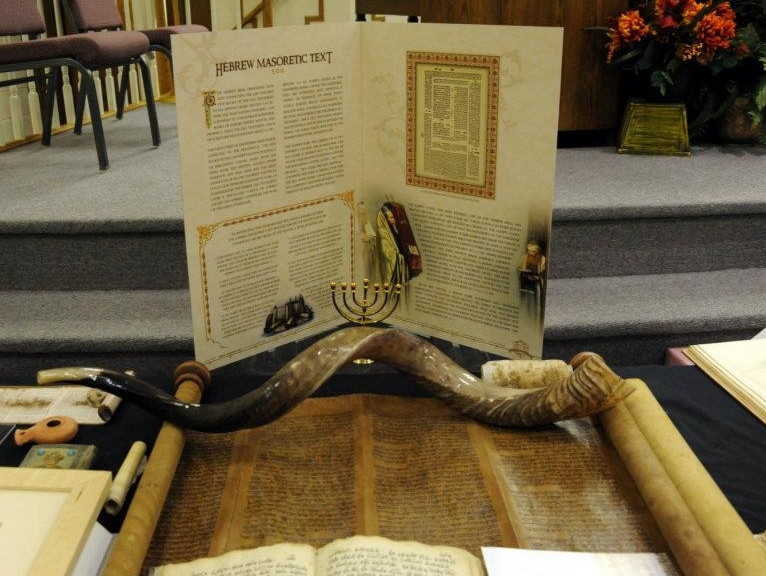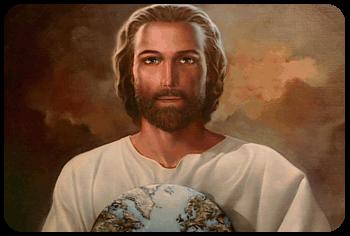
|
|
 |
|
**List: Kabyle Ministry the Bible ( theK'thabth )
BERBER.--1860 S. Bagster [Info only: Arabic Character n.d. Luke 6:27-38 unknown.]
GHADAMSI.--1860 S. Bagster [Info only: Arabic Character n.d. Matthew 3:7-17 unknown.] |

Kabyle Bible History (3) 
**List: Kabyle Ministry
the Bible ( theK'thabth )
Kabyle...
BERBER.
"I.--GEOGRAPHICAL EXTENT AND STATISTICS. THE whole of the interior of Northern Africa, from the Nile to the Atlantic, including the vast area of
the Sahara, is inhabited by the Berbers, a primitive race of people belonging to the same stock as the
Gætuli, Mauri, and Numidæ of antiquity. It is rather remarkable that, notwithstanding the political
convulsions and changes to which Northern Africa has been subjected, these representatives of the
ancient Libyan race still occupy the soil, and preserve the language, of their ancestors. Even their
towns and villages retain the same names as those by which they are distinguished in the writings of
Sallust and other classical writers; and the very signification of these names is the same in modern
Berber as in the Libyan idiom spoken in the days of those writers.
The Berbers are divided into several distinct nations, of which the principal are the Amazigh or
Berbers of Northern Atlas, the Shellahs, who inhabit the southern part of the same mountain chain,the Kabyles of the Algerine and Tunisian Mountains, and the Tuarick tribes of Siwah, Sokna, and the
Western Desert. The Tibboos of the Eastern Desert, though darker in complexion than the Berbers,
are supposed by some to belong to the same race. These nations are all brave and warlike, but un-
civilised, and are followers of the false prophet. In point of political government, they are subdivided
into a number of petty tribes, each of which, as among the Arabs, is under the command of a sheikh.
We possess no precise statistical accounts of this people, but it is certain that they form at least one-half
of the entire population of the empire of Morocco. Graberg estimates the Berbers, properly so called,
at above 2,000,000, and the Shellahs at 1,500,000.II.--CHARACTERISTICS OF THE LANGUAGE. Modern researches have gone far to prove that the Berber language forms part of Shemitic philo-
logy; yet, notwithstanding the Shemitic character of its structure, part of its vocabulary and many
of its peculiarities are so decidedly African as to entitle it to a place among this class of languages. It
resembles the Coptic in the preponderance which it gives to the letter t as an inflexional element, both
initial and final. Its participial system, however, approximates it to the Amharic, and one of its verbal
forms has a perfect counterpart in that language, and, according to Gesenius, in Himyaritic. The nouns,
observes Professor Newman, freely admit of that substitute for a genitive case which is in Hebrew and
Arabic entitled the putting of two nouns into regimen or construction. Some of the oldest nouns even
appear to have a real construct form, consisting in the addition of th to the noun itself. The article
and demonstrative pronouns are similar to the Hebrew and Arabic; the general principles of euphony,
inflection, and radical letters, present the same Shemitic features, and even the sounds of the Berber
language are Hebrew. But on the other hand, Berber possesses a large stock of prepositions of
undoubted African origin, and akin to those of the Haussa language; and it further deviates from the
true Shemitic type in the vast majority of its elemental words, in its peculiar usage of the participle,
in its power of prefixing the fragmentary pronoun to the verb, and in the possession of a double set of
affixes to distinguish the genitive and accusative cases. Owing to the influence of the Moh_mm_dan
religion, which is professed by the tribes of Northern Africa, and taught through the medium of the
North African dialect of the Arabic, a large number of Arabic words have found their way into the
Berber language. This, however, is as distinct from the Arabic as the Anglo-Saxon element
of the English language is from the Latin, French, or Greek words introduced into it by time and
custom.
The Guanche language of the Canaries, as appears from ancient inscriptions, was a dialect of the
Berber: the nation to whom it was vernacular became extinct, according to Alexander von Humboldt,
in the beginning of the sixteenth century. Some of the Berber tribes, especially those of the desert,
still employ the ancient Libyan letters of their forefathers; but the Arabic alphabet is now generally
used in writing and printing the various dialects of Berber.III.--VERSIONS OF THE SCRIPTURES IN THIS LANGUAGE. A translation of the first twelve chapters of the Gospel according to St. Luke into the Algerine-
Berber (or Showiah) dialect of the Berber language, spoken by the Kabyle tribes, was published by the
British and Foreign Bible Society in 1833. The MS., which included the whole of the Four Gospels
and the book of Genesis, was purchased by the Society of Mr. Hodgson, American consul at Algiers,
for the sum of £150. The translation, which had occupied about two years, had been executed under
the superintendence of that gentleman by a Kabyle Berber of the mountains near Algiers. Mr. Green-
field, the editorial superintendent of the British and Foreign Bible Society, was engaged in the
examination of the work at the time of his lamented decease. The editorship of the small portion of
St. Luke's Gospel eventually committed to the press was then transferred to Mr. Hattersley of Leeds.
Only 250 copies were printed as specimens, which were sent to individuals competent to form a judg-
ment concerning the critical value of the translation."--The Bible of Every Land. (1860, Second Edition) Samuel Bagster [Info only]BERBER.--1860 S. Bagster [Info only: Arabic Character n.d. Luke 6:27-38 unknown.]
GHADAMSI. "GHADAMSI is a sub-dialect of Tuarick, the language of one of the great nations into which the
Berber race is divided. Tuarick is the predominant language of the western part of the Sahara, and
Ghadamsi is spoken in Ghadamis, an oasis situated at about ten days’ journey south-west from Tripoli,
in lat. 30° 10' N., and long. 9° 19' E. The number of inhabitants in Ghadamis has been computed
at from six to seven thousand. The importance of this oasis, in a geographical and commercial point
of view, arises from the four grand roads which diverge from it into the interior of Africa. One of
these roads leads direct through the Great Desert to Timbuctoo, where some of the people of Ghadamis
are settled.
A translation of the third chapter of the Gospel according to St. Matthew was a few years since
made at Ghadamis, under the direction of the late James Richardson, Esq., by a native named Taleb
Ben Mousa Ben El-Kasem. A short vocabulary of the language was added by the Taleb, but, unhappily,
he got tired of his work before its completion. In fact, Mr. Richardson remarks, "the extraordinary
impatience with which these people do anything of this kind for Christians almost exceeds belief."
The MS. was sent from the desert to the British and Foreign Bible Society; it was transcribed by
Professor Newman, of University College, who also appended a Latin translation; and a small edition,
intended chiefly as a specimen of the language, has been published by order of the Foreign Office."--The Bible of Every Land. (1860, Second Edition) Samuel Bagster [Info only]GHADAMSI.--1860 S. Bagster [Info only: Arabic Character n.d. Matthew 3:7-17 unknown.]
[Christian Helps Ministry (USA)] [Christian Home Bible Course]